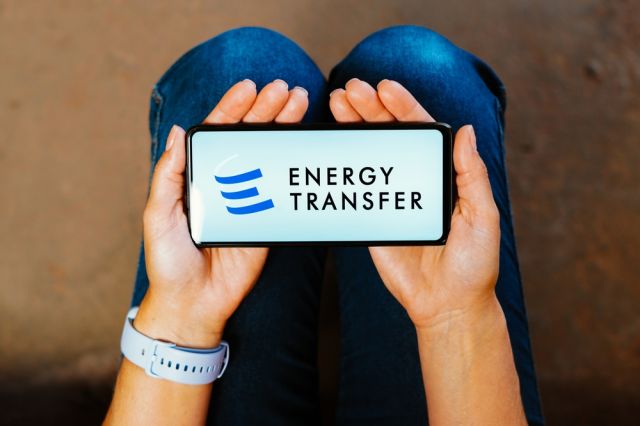
Energy Transfer said the July 31 announcement of the new Permian Basin Blackcomb natural gas pipeline will have “zero” effect on its Warrior Pipeline. (Source: Shutterstock)
Energy Transfer (ET) continues to push for its Warrior natural gas pipeline out of the Permian Basin, even though a competing project reached final investment decision (FID) first.
Backers of the Blackcomb Pipeline, a proposed 365-mile pipeline to move natural gas from the Permian Basin to the Augua Dulce area in South Texas, announced FID on July 31.
During ET’s second-quarter earnings call on Aug. 8, co-CEO Mackie McCrea said the company was still going full speed on the development of Warrior.
“We've had some questions, both internally but mainly externally, about what does the announcement going to Agua Dulce do to Warrior?” McCrea said. “I’ll just summarize that—zero.”
For one thing, Warrior will service a different part of the Permian.
Analysts predicted the Blackcomb announcement would hinder the development of other major natural gas pipeline projects out of the Permian. Blackcomb is designed with a capacity of 2.5 Bcf/d to handle the rising levels of natural gas production predicted for the area by 2026—when Blackcomb is expected to begin service.
The Warrior Pipeline is designed to connect 1.5 Bcf/d to 2 Bcf/d of natural gas to ET’s interconnects southwest of Fort Worth in northern Texas. The different delivery location means Warrior remains viable, McCrea said.
“The vast majority of the customers that we've already signed up, and that we're pressing to sign up over the next 60 to 90 days, have no desire for either their gas to be in South Texas or in the markets that are supporting this project,” McCrea said. “So by no means is that slowing us down.”
There is a “tremendous market” for natural gas in East Texas and in the states beyond, he said. The CEO also cited growing demand for natural gas powergen needed to keep pace with data center growth.
On the supply side, ET believes the ongoing development of the Permian will be enough to support the Warrior as well as the Blackcomb in the years to come.
“I'll be disappointed—though certainly I’m not implying that we're almost FID—but I'll be disappointed if we're not announcing FID by our next earnings call,” McCrea said.
NGL strength
While natural gas market growth remains in the future, ET reported that 2024 has so far been strong for its NGL business. In the first half of 2024, the company spent about $1 billion in organic growth capital on its NGL, refined products and midstream segments. For all of 2024, the company raised its growth capex expectations from $2.9 billion to $3.1 billion, primarily for the same three segments.
In the second quarter, adjusted EBITDA in the NGL and refined products segments was $1.07 billion, compared to $837 million for the same period in 2023. ET reported record traffic on its NGL lines, as well as record NGL exports.
The company expects to see growing supplies of NGLs from its $3 billion acquisition of the Permian’s WTG Midstream Holdings, which closed in July.
“It's really going to feed into our residue business, our downstream residue business, as well as our Lone Star NGL transport and fractionation business,” McCrea said. “We’re still getting our arms around it.”
The Gulf Coast Lone Star NGL Express transports products from the Permian to ET’s Mont Belvieu and fractionation and storage facilities.
Overall for the second quarter, the company reported a net income of $1.31 billion and adjusted EBITDA of $3.76 billion. During the same period in 2023, adjusted EBITDA was $3.12 billion.
Recommended Reading
E&P Highlights: Jan. 21, 2025
2025-01-21 - Here’s a roundup of the latest E&P headlines, with Flowserve getting a contract from ADNOC and a couple of offshore oil and gas discoveries.
E&P Highlights: Feb. 18, 2025
2025-02-18 - Here’s a roundup of the latest E&P headlines, from new activity in the Búzios field offshore Brazil to new production in the Mediterranean.
Halliburton, Coterra Launch Fully Automated Hydraulic Fracturing Tech
2025-01-06 - Halliburton Energy Services and Coterra Energy’s initial rollout of their autonomous hydraulic fracturing technology led to a 17% increase in stage efficiency.
Integrating OCTG Management from Planning to Well
2024-12-10 - Tenaris’ Rig Direct provides improved collaboration and communication, and more uptime.
SLB to Manage Construction of Deepwater Wells for Petrobras
2024-12-11 - SLB will work off nine ultra-deepwater rigs to oversee the construction of deepwater wells as part of the $800 million, three-year deal with Petrobras.
Comments
Add new comment
This conversation is moderated according to Hart Energy community rules. Please read the rules before joining the discussion. If you’re experiencing any technical problems, please contact our customer care team.






